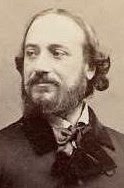Giuseppe Pinelli - anarchist
Giuseppe 'Pino' Pinelli, the railway worker from Milan who inspired Dario Fo to write his classic play, Accidental Death of an Anarchist, was born on this day in 1928. Pinelli fell to his death from a fourth floor window of the Milan Questura - the main police station - on December 15, 1969, three days after a bomb exploded at a bank in Piazza Fontana in Milan, killing 17 people and wounding 88. A known anarchist during a period of growing political and social tension in Italy, Pinelli had been picked up for questioning, along with a number of other activists, over the Piazza Fontana bomb. The story put out first by police was that Pinelli had jumped, willing to take his own life rather than face prosecution. Yet three police officers who had been interrogating Pinelli were put under investigation. No action was taken against them and later a judge ruled that Pinelli's death had been accidental. This time the suggestion was that he had fainted, lost his balance and fallen through the open window, which seemed to many to be somewhat far-fetched. It did not convince his supporters and when one of his interrogators, Commissioner Luigi Calabresi, was shot dead on his way to work in May 1972, two left-wing activists were convicted of his murder. Read more…
_________________________________________________________________
Prince Amedeo, Duke of Aosta
Cousin of Italy's wartime monarch died in a POW camp
Prince Amedeo, Duke of Aosta, who died in a British prisoner-of-war camp after leading the defeated Italian Army in the East Africa Campaign of the Second World War, was born on this day in 1898 in Turin. After distinguished military service in the First World War and seeing action as a pilot in the pacification of Italian Libya in the early 1930s, Amedeo had been appointed by Mussolini as Viceroy of Ethiopia and Governor-General of Italian East Africa in 1937, replacing the controversial Marshal Rodolfo Graziani. Italy’s entry into the Second World War on the side of Germany in June 1940 meant the Duke of Aosta became the commander of the Italian forces against the British in what became known as the East African Campaign. As such, he oversaw the Italian advances into the Sudan and Kenya and the Italian invasion of British Somaliland. However, when the British launched a counter-invasion early the following year, the Italians were put on the defensive and after fighting desperately to protect their territory were beaten in the Battle of Keren. The rest of Eritrea, including the port of Massawa, fell soon afterwards. Read more…
__________________________________________________________________
Domenichino - Baroque master
Artist whose talents rivalled Raphael
The painter Domenico Zampieri, in his era spoken of in the same breath as Raphael, was born on this day in 1581 in Bologna. Better known as Domenichino (“Little Domenico”), the nickname he picked up early in his career on account of his small stature, he painted in classical and later Baroque styles in Rome, Bologna and Naples. Noted for the subtle, almost serene lighting and understated colours of his compositions, he painted portraits, landscapes, religious and mythological scenes and had a prolific output. Among his most notable works were significant frescoes commissioned by Cardinal Alessandro Farnese for the Badia (monastery) at Grottaferrata, outside Rome, and for Cardinal Pietro Aldobrandini at the Villa Belvedere (also known as the Villa Aldobrandini) in nearby Frascati, as well as Scenes from the Life of Saint Cecilia at the church of San Luigi dei Francesi, not far from Piazza Navona, in Rome itself. Domenichino’s paintings can be seen in art galleries in many countries, with the largest single collection held by the Louvre in Paris. One of his most celebrated paintings, the depiction of St John the Evangelist that he worked on between 1621 and 1629, has been described as a “masterpiece epitomising the grandeur and nobility of Roman Baroque". Read more…
Home























